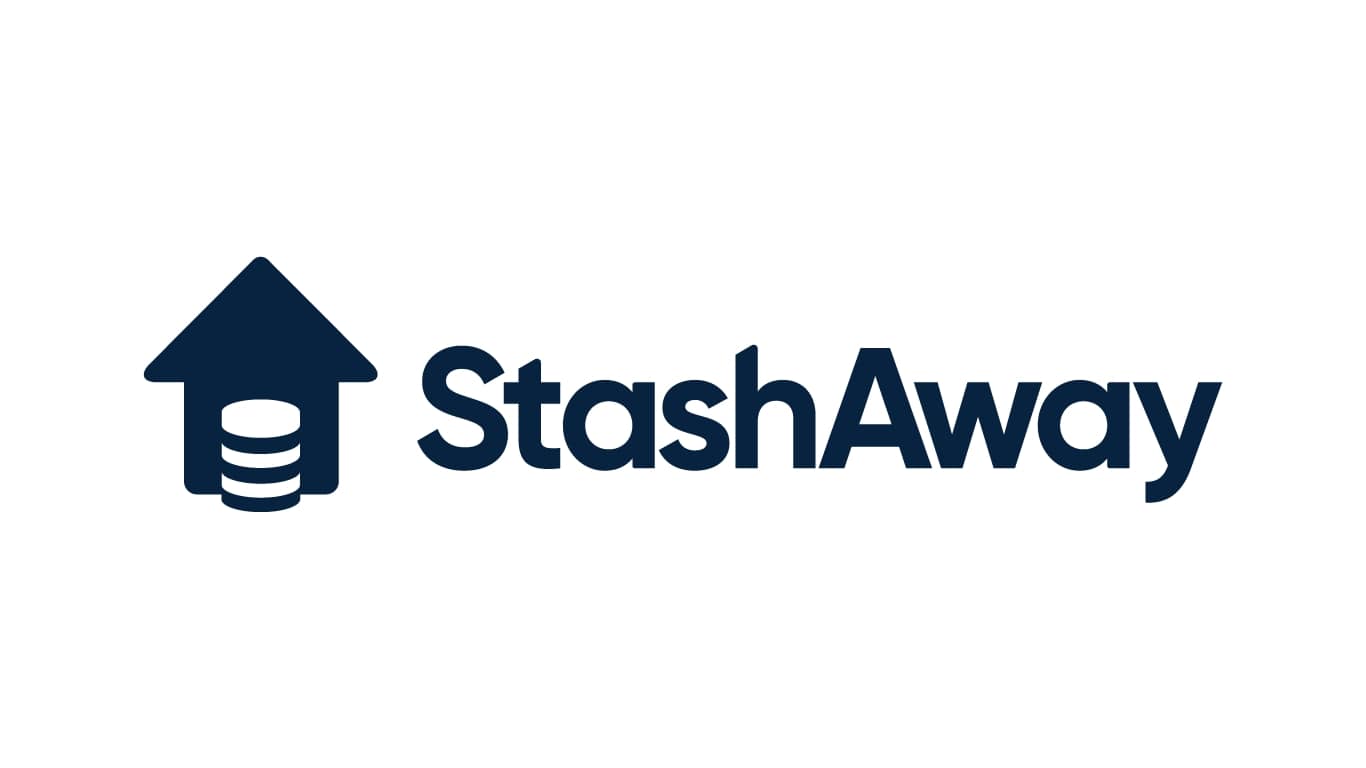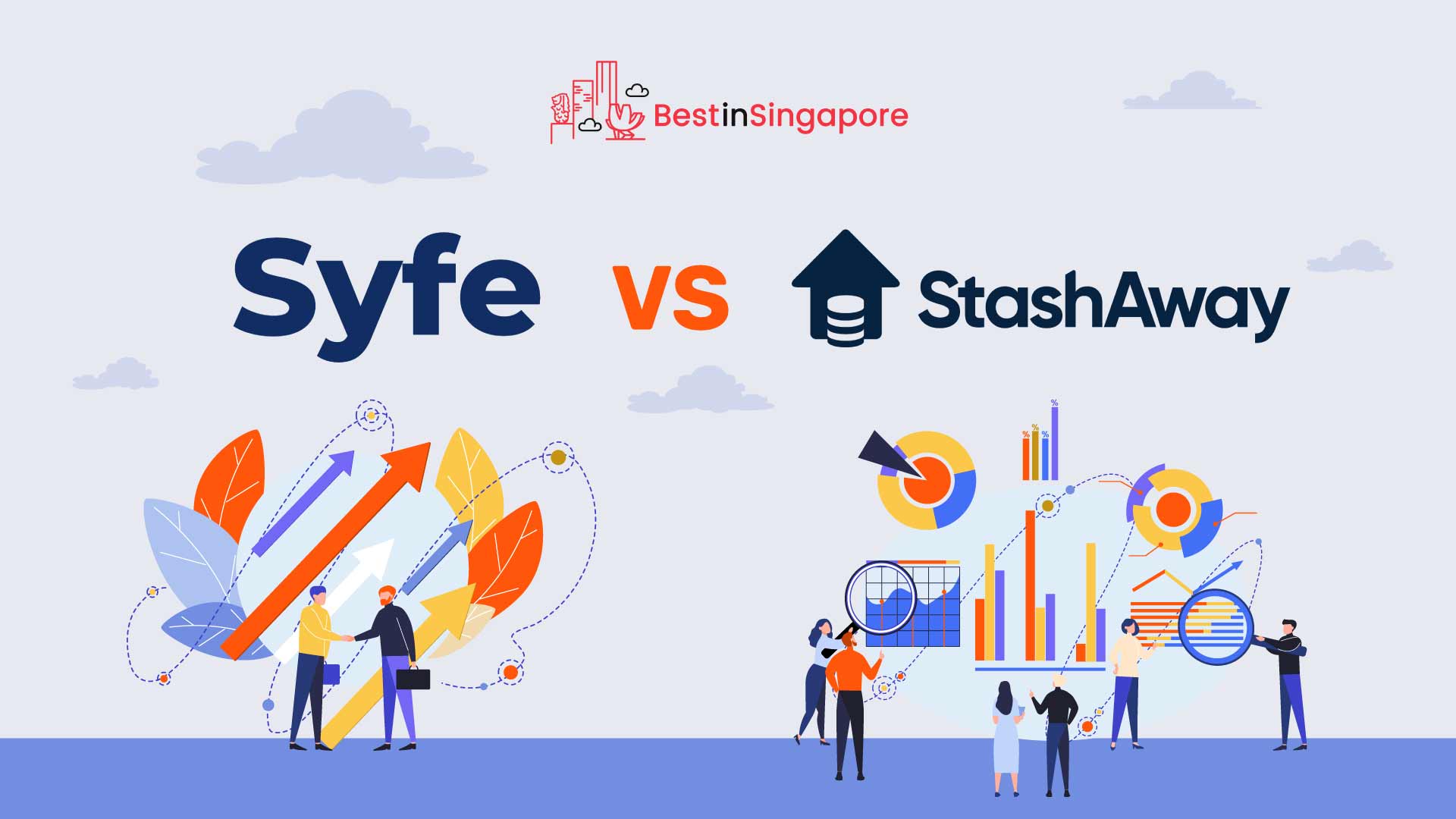Syfe VS StashAway: A Beginner’s Guide to These Robo Advisors
For today’s article, we’re going to compare 2 of the best robo advisors in Singapore: Syfe and StashAway. If you’ve finally decided to test your luck in stock market investing, then you’ve probably heard both of these names… but how would you know which one to pick?
Well, our comparison here should help you figure that out. We’ll compare minimum investment figures, annual fees, asset classes, and more!
But before we move on to our comparison of Syfe VS StashAway, we’re going to answer a few questions that beginners usually have about a robo advisor, how it works, and what are its fees, among others.
FAQs about Robo Advisors in Singapore
Robo advisors are the ideal options for people who want to get into investment but don’t know how it works. A robo advisor requires little-to-no knowledge about investing, does not consume a lot of time, and is basically easy to navigate and understand.
However, in order to find the right robo advisor for you, you have to know what robo advisors are, how they operate, and if they’re capable of meeting your financial goals.
Check out the questions below, which are usually asked by beginners in stock market investing:
1. What are robo advisors?
Robo advisors are basically computer programs driven by algorithms that manage your investment without requiring you to consult with a financial expert or manage your own portfolio.
It’s worth noting that there are a few robo advisors that also provide consultations with a real financial advisor, though — which can be considered a bonus.
Simply put, robo advisors are an alternative to financial advisors, whose services tend to be pricey. Robo advisors, on the other hand, are definitely cheaper.
If there’s a downside with robo advisors, it’d have to be that there are no nuances with their suggestions because they run on algorithms. That said, clients still have the power to accept or decline the recommendations of their robo advisor.
2. How do robo advisors work?
If you’re a new customer, you have to sign up by providing basic information related to your financial situation and investment goals through an online survey.
Some of the questions you will encounter are about your investment timeline, risk tolerance, and how much you have in savings.
Robo advisors will then process those answers in an algorithm to recommend a diversified investment portfolio based on your answers. If you agree with its investment allocations, then it’s time to transfer the funds.
Most robo advisors will also encourage investors to regularly add money to their accounts in the form of monthly or weekly deposits. This is to ensure that your robo advisors maintain the target allocation.
3. How much are the fees?
The fees investors have to pay vary depending on the policies of their robo advisors. Robo advisor fees may be structured as fixed monthly fees or a percentage of your total assets.
In terms of the top robo advisors on the island, the annual fees range from roughly 0.65% to 1.23%. If you have less in investments, you might be charged higher annual fees though.
Other fees that robo advisors usually charge their clients are platform fees, withdrawal fees, and more.
There might be more fees to pay when you’re using the services of robo advisors, but they are still the cheaper option compared to hiring a personal financial advisor.
4. How do taxes work for robo advisors?
As with any other form of investment, your taxes for robo-managed investments depend on the type of account you’re holding.
If you’re holding an IRA, Roth IRA, and a tax-deferred retirement account, then you’re not subject to tax until your funds are withdrawn.
On the other hand, if you store your assets in a taxable account, then you’re obliged to report those on your tax return and pay taxes on your earnings.
Syfe VS StashAway
Anyway, now that we have answered your pressing questions about robo advisors on the island, it’s time to investigate what makes the Syfe and StashAway robo advisors worth investing with, as well as which one’s better for you.
Let’s start with Syfe, shall we?
Syfe

If you’re looking for a robo advisor that’s perfect for both beginners and advanced investors, then you might want to check out what Syfe can offer. It’s currently serving clients across 23 countries, but most of its active clients are based in Singapore.
It’s considered one of the more beginner-friendly robo advisors due to the straightforward pricing structure. On top of that, its management fees are relatively low compared to competitors.
If you want to know the type of portfolio you could get from Syfe, all you have to do is answer their online questionnaire where you will have to input your long-term goals, financial situation, and risk appetite.
Here’s a closer look into the services of Syfe:
1. Fees
In terms of fees, Syfe has some of the lowest and most attractive fees among all robo advisors on the island — which is what makes it one of the ideal options for beginners.
One of the best things about it is that you literally don’t need a lot of money in order to start your investment. It also doesn’t have a required minimum investment, allowing beginners to jump in even with a small sum of savings.
Its management fees are quite low too, ranging from 0.65% to 0.4%. However, those who use its basic plans will have to pay more in management fees than those who have either gold or platinum accounts.
Any investment from $1 to $19,999 will be charged 0.65%, while anything beyond $20,000 will be 0.50%. Those with investments higher than $100k will be charged 0.40% in annual fees.
It’s similar to the strategy of other robo advisors on the island: invest more and be charged with lower annual fees. Still, Syfe remains one of the cheapest options for beginners.
2. Investment Strategy
When it comes to investment strategies, we believe that Syfe is ideal for those who plan to stick with it for a long time. Its investment methodology allows patient and long-term clients to witness impressive growth in their assets.
Syfe is known for using Automated Risk-managed Investments (ARI) as its investment strategy. It’s a combination of two leading investment approaches: Global Market Portfolio (GMP) and Risk Parity Portfolio (RP).
ARI automatically adjusts a client’s portfolio to provide enhanced risk-adjusted returns by managing your portfolio’s Downside Risk. It’s been stress tested for over 15 years, and it’s not disappointed clients so far.
3. Asset Classes
If you don’t know what asset classes are, these are where a robo advisor invests your money. Most of the robo advisors on the island invest in both locally and globally listed stocks, but consider Syfe a bit different.
Syfe is known for offering the first and only SG REIT-based portfolio on the island back when it was first released. It allowed retail investors based on the island to own some of the top REITs in Singapore without being charged hefty trading fees and ridiculously high upfront capital.
It’s also the only investment advisor in Singapore that doesn’t invest in ETFs. Syfe purchases underlying REIT s instead, which makes it possible for investors to own property directly although serving as a custodian.
If you’re looking for a more diversified portfolio, then go for its Income Portfolio, which diversifies into the S-REIT market.
On the other hand, Syfe is also offering a new portfolio called Equity100, which is ideal for those who want to invest for a long period of time. Investors are to invest in 100% equities (stocks).
If you are patient enough to hold on to it for a long time, you will definitely see huge growth in your assets as equities have been observed to trend upwards in the long run. Patience is the key, as the saying goes.
4. Pros and Cons
Every robo advisor on the island comes with their own pros and cons, including Syfe. However, we believe that its pros outweigh its list of cons.
For one, there’s no doubt that Syfe is an ideal option for beginner investors. It has no required initial investment, minimal annual fees, innovative investment strategy, multiple asset classes options.
On the other hand, if you’re not willing to wait for a long time to see proper and huge growth in your assets, then Syfe might not be the best option for you. This is the only disadvantage that we can think of about Syfe.
5. Reviews for Syfe
Take a look at what a client had to say about his experience with Syfe:
“The initial slump in stock markets offered an entry point for me to pick up investment. I was able to monitor the market actively during the CB. But when Phase 2 kicked in, I realised I could not continue to do that when work started to pile up.
The ease of opening the account, choosing the portfolios, funds transfer and low management fees made it extremely easy for new investors like me. The use of robo advisors assured my interests are safeguarded against any human errors and I can continue to watch my portfolios grow without the stress of doing constant monitoring.
Customer service at Syfe is prompt and I constantly receive resources like articles and invitations to webinars to enrich my investment knowledge.”
StashAway

Now, let’s move on to StashAway, undoubtedly one of the top robo advisors on the island. It’s where advanced and experienced investors choose to invest their money because its fees are friendlier for those with higher investments.
If you’re planning to enter stock market investing with big investments straightaway, then StashAway would be the perfect option for you. Otherwise, you might want to go with Syfe.
When it comes to portfolio recommendations, StashAway does what other robo advisors are doing: requiring clients to answer a series of questions about their financial situation, long-term goals, and risk appetite.
Let’s take a look at how much StashAway charges it clients:
1. Fees
Like Syfe, StashAway doesn’t require a minimum amount for investments.
More than that, StashAway doesn’t have maintaining balance, withdrawal fees, and platform fees.
Basically, all investors have to pay are the annual management fees.
On the other hand, the management fees might make a huge dent on your investment, especially if the investment is small: it charges those with investments lower than a million with 0.80% in fees.
StashAway’s management fees range from 0.20% to 0.80% annually. When compared to Syfe’s annual fees, Syfe is more fee-friendly towards those who can only afford small investments.
2. Investment Strategy
In terms of investment strategy, we’ve always been impressed by how StashAway uses live and historical data to monitor the conditions of the markets. Doing so allows them to be prepared in case there’s a major economic event that might cause the market to plummet.
It also prevents them from investing their clients’ savings too early or too late in the game. If you sign up for the services of StashAway, you can expect that it will do everything in its power to minimise the impact of the unpredictability of the stock market.
StashAway’s investment approach is a bit more outdated compared to Syfe’s. However, its investment strategy has been proven to be effective multiple times.
3. Asset Classes
If Syfe offers its clients 3 asset classes, StashAway can only offer one. However, that doesn’t automatically make it inferior because ETFs are known for low expense fees, deep liquidity, and high trading volumes.
If you’re willing to gamble to see huge growth, then you’re going to like the asset classes of StashAway. One of the best things about it is that investors will gain a diversified portfolio of securities from a wide range of classes and markets.
However, it’s worth noting that StashAway mainly concentrates on US-listed ETFs, which come with their own costs and risks, including taxes for bond payouts and dividends.
4. Pros and Cons
If you’re a beginner, you’re definitely going to be attracted by StashAway’s fewer fees. It also doesn’t pressure clients to meet a required minimum investment, something that most robo advisors in Singapore do.
In the long run, investors may save more money by investing with StashAway because their assets won’t be cut down by multiple fees.
However, as we’d mentioned earlier, StashAway’s fees are only kinder if you’re making a huge investment, which isn’t possible for all beginner investors. If you’re a beginner, you wouldn’t want to invest a million dollars right away, would you?
It’s also a decent choice for short-term to medium-term investors, as compared to Syfe, which is better for long-term ones.
5. Reviews for StashAway
Here’s what investors have to say about their experience with StashAway:
“Great robo investor app that allows me to allocate my money as I want. The app is as good as the desktop version and is fully accessible to all the features the client engagement is also quick and efficient as I have had some enquiries in the past which were quickly solved through contacting their team via WhatsApp they also have educational programmes on their website to teach the general public how to invest appropriately and what their app invests in!”
“Stashaway allows for investments across broad asset classes and different geographies at your own preferred/targeted risk level. Fuss free consistent dollar cost averaging can be set up easily. Major plus point of being a well-designed mobile app with a clear user interface. Client engagement team is helpful and replies to queries quickly. Especially important when you have any questions or technical issues.”
Conclusion: Syfe VS Stashaway
| KEY POINTS | |
| Syfe | StashAway |
| ● No minimum investment
● Innovative investment strategy ● Option to choose an investment portfolio ● Low annual management fees ● No unnecessary fees charged ● Ideal for long-term investors ● No withdrawal or brokerage fees ● Curated ETFs |
● SRS and cash investments are allowed
● Open for retirement planning for fewer fees ● Based on Economic Regime-based Asset Allocation ● No minimum investment ● No upfront fees ● Portfolio can be accessed anytime ● Puts emphasis on risk management ● Friendlier to short-term and medium-term investors than Syfe |
And with that, we conclude our comparison of Syfe VS StashAway, 2 of the best robo advisors on the island. Based on what we’ve researched, both can be good for beginner investors, but there might be more perks and safety with Syfe.
Since both of them have low management fees and no minimum investments, they’re both attractive to beginners, but what comes after investing your money is just as important. Investment approach-wise, both are impressive because they have proven to be capable of providing high returns without exposing clients to a lot of risks.
If you’re planning to become a long-term investor, then we suggest going with Syfe because its investment strategy and investment portfolios are designed for long-term growth. It also needs your patience because the growth will not take over night.
Otherwise, go with StashAway, but prepare yourself to pay higher management fees because it charges higher fees to the clients with low investments. You will get to see growth in your investments faster than with Syfe, though.
Anyway, we put an end on our comparison of Syfe VS StashAway here. If you’re also looking for other robo advisors to check out, we recommend reading our other comparisons of robo advisors: like the one for Autowealth and StashAway.


